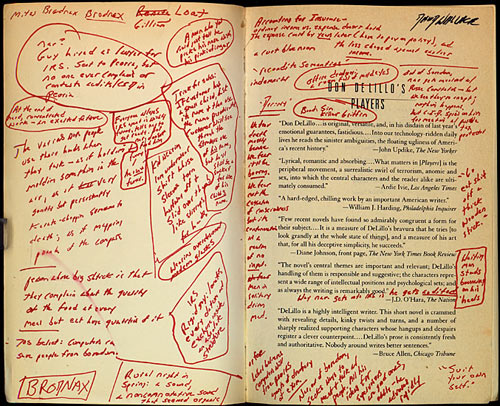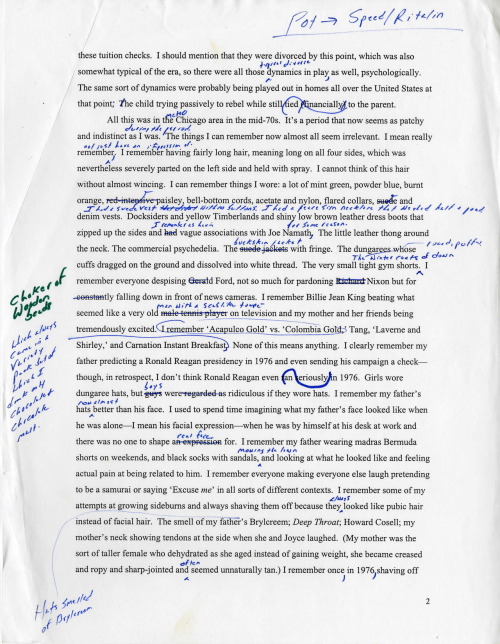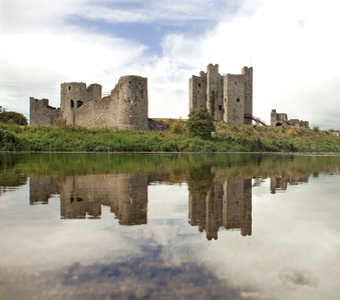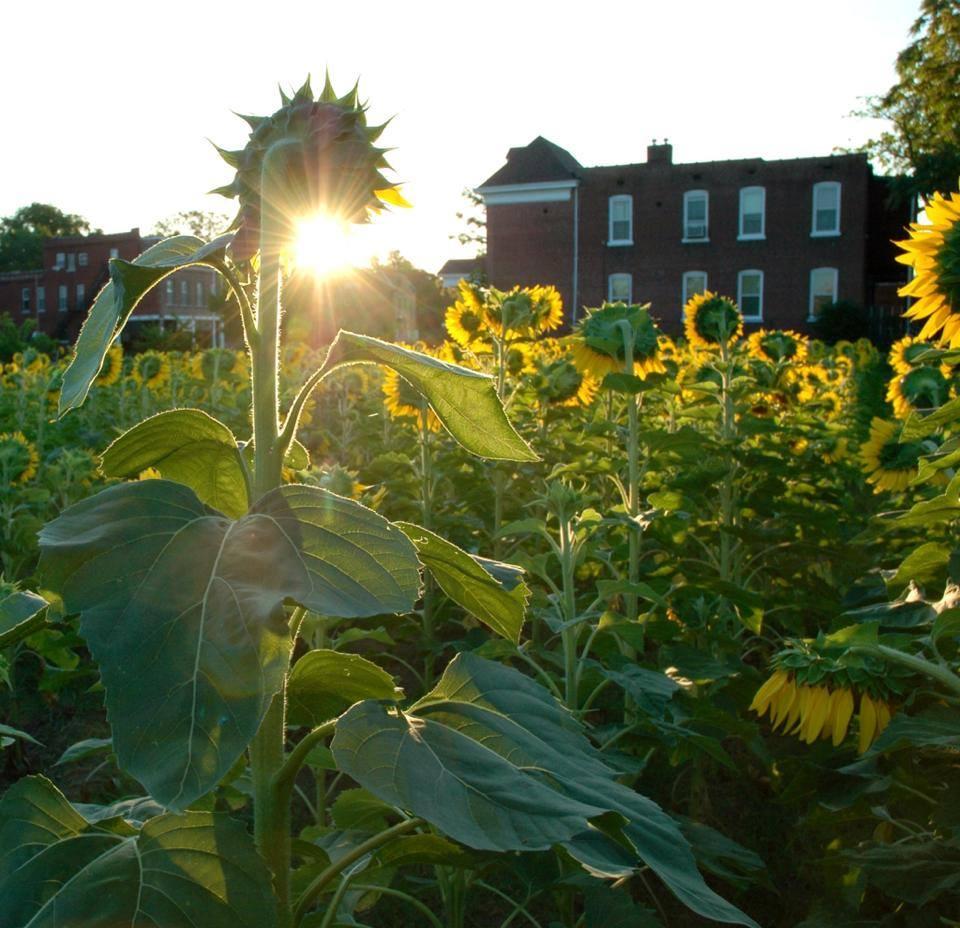Monday, November 7, 2016
The Daily Mail has a great feature about a series of maps of river systems in the USA. The feature is available here.
For local reference I added locations for Standing Rock, North Dakota and St. Louis, Missouri - locations within the greater Mississippi River Basin.
Sunday, April 17, 2016
In the David Foster Wallace Archive: Part 1/3
 |
| part of the archive in the stacks |
I returned from Austin a few weeks ago and while there was
able to spend 5 hours examining various documents in the David Foster Wallace
(DFW) archive at the Harry Ransom Center (HRC) of the University of Texas. And
so, I was also able to examine hand written drafts, heavily notated typescripts
and other fragments from the birth of Infinite Jest (IJ). Wow. I hope this
short essay will transmit a sense of the humanity and process of Wallace as
writer and man. I paged through books
from his personal library w/ his marginalia inscribed; I chose books that I
have some familiarity with: The Moviegoer – Walker Percy, Against
Interpretation – Susan Sontag, and The Fire Next Time – James Baldwin.
Pretty cool stuff, which we can imagine indicate the portions of the texts he found
most salient – especially the hand written notes in the Percy, which he taught,
at Pomona, I believe.
 |
| DFW's marginalia in The Moviegoer has a similar appearance |
Showing images from the things I reviewed would be ideal,
but doing so would require time and money to acquire copyroght permissions I do not have. I will, however, show a
few examples of similar items (in appearance, if not content) so the physical
gist can be understood. It should also go without saying that nothing I write
here could in any way be construed as the result of an authoritative study of
the archive. It is just a glimpse of my own introduction to a fragment of the
materials available.
There is a whole set of rules, which seem pretty much
appropriate for such a place, that must be followed to do archival research at
the HRC. I had to create an account with ‘logon’ username and password. I
emailed staff ahead of time to make sure there were no unknown obstacles to stall
or prevent access to the material. The archive staff was and is very helpful.
Upon arrival one must watch a short video on handling archival materials, photography
requirements (as a research and note taking aid one is allowed to use a cell
phone camera to photograph documents to refer to in the future - this privilege
also requires a solemn vow to not share the images), copyright rules and so on.
I was only allowed to bring into the archive reading room my phone or a
computer and pencil and paper provided by the HRC. Lockers are provided for
other belongings. Once issued a pass for the reading room, entry is gained, I
was shown how to call up material by computer and request boxes containing
catalogued folders of manuscript and typescript matter. I also requested a few
books from his personal library.
I was invited to settle in at a work table in front of the
on duty librarians and then the requested material wass placed on a separate
table between the researcher work tables and the librarians. One is only allowed to
take one folder from an archive box at a time to the work table. Several books
can be brought to the work table simultaneously. And this I did with some reverence
and not just a bit of trepidation.
Knowing that my time in the archive would be limited to a
few breaks in a conference I was attending, a strategy had to be developed
would enable me to get to know DFW a little bit and to get a small sense of the
evolution of IJ. Photographing pages became key. I decided to concentrate on materials that
were, as best I could tell from the catalogue notes, from parts of the book that are arranged in
the first few hundred pages as we know them now.
I have 50 photographs, of mostly whole pages of hand written
manuscript and/or annotated typescript. Some are different iterations of the
same scene. Upon returning home I
identified the pages in the current print edition that correspond to the
material in the manuscript pages. Here
are a few details from the examples I collected:
 |
| This is from The Pale King, but looks similar to the IJ stuff in appearance. Different pen colors, underlines, rearrangements, etc. |
- There is a cover to writing sent to his agent, Bonnie Nadell, titled ‘First Two Sections’ and then on the next line ‘Infinite Jest’ and this work does not start in Tucson in the Year of Glad.
- This cover clearly indicates the document is “INTENDED ONLY FOR THE RETINAS OF PEOPLE TO WHOM IT’S EXPLICITLY SENT”
- This is followed by a section titled ‘Preliminary Throat Clearings’ in type, but with a handwritten ‘Cut?’ at the top. It features the dedication (which still exists, though slightly modified), an epigraph from Blake’s Marriage of Heaven and Hell which reads: ‘Sorrow brings forth’ and definitions of addict and addiction from the Oxford English Dictionary (OED).
- The scene that starts this part/beginning of the typescript is found on P37, with Hal going his father, James Orin Incandenza (JOI) who is disguised as a ‘professional conversationalist.’ This gets pretty interesting as I also came across, what I presume to be an earlier incarnation of the scene, in which the ‘Hal’ character is called ‘David’ and it is putatively dated, April 1, 1974. DFW was 13/14 that year.
- Another typescript has the year of this episode taking place in the Year of the Perdue Wonderchicken, which is the scratched out and then the Year of the Trial-Size Dove Bar is inked in and then, that is scratched out and finally the Year of the Tuck’s Medicated Pad is written in and that is what appears in the final text.
- The scene DFW attempted to render in the ‘African-American Vernacular’ that begins on P37 with ‘Wardine say…’ looks to have been earmarked for the Year of the Whisper Quiet Maytag Dishwasher. However that was crossed out in pen and the Year of the Trial-Size Dove Bar was written in in blue ballpoint ink – which is the year of subsidized time that now appears in the text.
- What is still more interesting, imho, is another version of the same scene titled ‘Las Meninas.’ It is essentially the same thing, but on the bottom of its typed second page is an indication that it was written while he was in grad school at the University of Arizona.
- On P33 of the text we are introduced to the last medical attache. From the material I observed he went from one quarter to one half ‘ethnic Arab’ as the drafts proceeded.
- On the back of a typescript page are handwritten sentences which appear in modified form in the middle of P35. It is a description of the teleputer and the medical attache’s relationship with it. Adjectives, word order and other changes occur on the way to the final edition.
More on IJ in Part 2/3 and a few notes on his books as well
as any conclusions I may come to in Part 3/3.
Monday, March 7, 2016
From the Notebooks of Paul Klee
Look here: http://www.kleegestaltungslehre.zpk.org/ee/ZPK/BF/2012/01/01/001/ for more. Below are a few samples I really like.
Sunday, March 6, 2016
All the Art is on the Streets - Spring 2016
As Principal Photographer of www.alltheartstl.com I invite you to enjoy our Spring 2016 issue:
Friday, January 29, 2016
Delacroix, Picasso & Bearden
I went to the Kemper at Washington U. tonight and spent a little time on the top floor with the permanent collection. It is like spending time with old friends. A Picasso from his mid -1950s homage to Delacroix's Femme d'Alger is one of my favorites.
Here is the Delacroix, which is based, in part, on his field sketches.
The joys of intertextuality.
Here are 2 more versions from the Picasso series.
Another piece on view is Romare Bearden's Black Venus shown here
Here is a 'spotlight' from the Kemper: http://kemperartmuseum.wustl.edu/files/spotlight2.07.pdf that talks about various influences on Bearden, including Matisse and others. Anyway, as I walked from Wash U.s Picasso to the Bearden I was struck by the woman in the background on the right. It really reminds me of how Picasso moved the black woman in Delacroix's composition to the 'rear' of the composition. Or, I'm seeing things.
 |
| detail of Black Venus |
Wednesday, January 27, 2016
Kota, Contemporary Art, and History
There is a powerful and beautiful exhibit at The Pulitzer Arts Foundation. It is titled:
Kota: Digital Excavations in African Art
Since Mike Brown was killed on August 9, 2014 I have read numerous books on racism, the school to prison pipeline, sundown towns and the great migration. I have read histories of race relations in St. Louis, numerous articles, newspaper stories and I've spent a fair amount of time on the street. Among the many things I've learned is that the history we present in schools, mainstream media, and in art institutions is not commensurate with all too many of the facts of the lived experience of many, if not most of my fellow Americans who happen to be black. Their story need not be told by me; plenty of black folks do a fine job of putting the information on the table for all of us to read. I've shared reading lists elsewhere. Left Bank Books has a good one.
Still, my heightened interest in the inadequacy of our representations of history, vis-à-vis race, was piqued by the Kota exhibit at Pulitzer Arts. Seven weeks ago I posted an image on IG from the exhibit with the following comment:
stunningly beautiful Kota figures @pulitzerarts in the #stl - how did they get out of Africa? when will the be returned? discuss....appropriation or misappropriation?
I have an opinion about the matter, but I simply don't 'know' enough to voice it as more than an invitation to discussion. To that end I was grateful for the event Pulitzer Arts hosted called The Ethics of Study, The Pulitzer's curator and an art historian from SLAM presented/lead a discussion that did not bring up the issues from my IG post, but the issue was not ignored during our questions and discussions either. The Pulitzer's Director of Public Projects shared that they added more explanatory material to the exhibition hand outs while acknowledging that a different range or scope of thought about origins, etc. might have been of value from the onset. I respect and appreciate this.
However, I remain bothered that a big chunk of reality is given short-shrift in the 21st Century. Howard Zinn's work and that of others is no longer hard to find. We know there is another side to the coin and, especially after the Ferguson Uprising, it seems to make no sense to ignore all that is known if a person or an institution wants to maintain credibility. This article: Central Africa: Price of Kota Sold in Paris Is Interesting...is worth a read for another perspective on the 'Kota market' and the problematic issues of provenance.
The rest of what I have to share plays out in images more than anything else. How might we come to feel/have a clue about the experiences of our brothers and sisters of color? For me it is about watching and listening and concentrating on understanding, rather than responding. I assume there will be times when I get it wrong. I speak now only of the emotions and ideas that occurred to me.
Browsing through Phaidon's monograph, Theaster Gates I came across this image from a glass slide he rescued from deaccession by the University of Chicago.
It is referred to as a 'wooden idol.' The times, I suppose have changed. I posted this on Twitter and Gates (w/ whom I worked on a Rebuild Foundation project in St. Louis) re-tweeted it. It seemed to tie western views of African history from the past to the present. Only the names have changed.
I have enjoyed the work of Glenn Ligon for a long time. His use of stencils is something I've always liked. Here is one of my favorites.
These are quotes from Zora Neal Hurstan's essay How It Feels to Be Colored Me. The essay was published in 1928, perhaps near the time of the glass slide above was made. I first read about her in Rampersad's biography of Langston Hughes. She was a pivotal and inspirational figure of the Harlem Renaissance.
Glenn Ligon's presentation of Ms. Hurston's words popped into my head as I looked at the photograph I took of the Kota at the Pulitzer.
We owe it to everyone to produce and demand accounts and presentations of art and art history that includes an accurate and holistic presentation of what we know. Let's keep the conversation going and the pressure on.
Tuesday, December 15, 2015
New/Cool Info on Local Food Scene
First up is St. Louis MetroMarket - from their website: It is a non-profit mobile farmer’s market
that will serve all St. Louis area food deserts – communities that lack
grocery stores – by providing direct access to fresh, healthy,
affordable produce and advocating on issues related to food justice,
hunger, and health. So check out the website and keep on the lookout.
Next is The Interactive Local Foodshed Map hosted by the Missouri Coalition for the Environment. Here is a screenshot of the map - browse around the website for yourself and connect w/ all food things local.
Next is The Interactive Local Foodshed Map hosted by the Missouri Coalition for the Environment. Here is a screenshot of the map - browse around the website for yourself and connect w/ all food things local.
Monday, December 7, 2015
Art & Money: Critical Mass & Critical Conversations in St. Louis
http://criticalmassart.org/ hosted this event at KDHX's Magnolia Cafe. The full video is embedded here.
Per Panelist Roseann Weiss there are 16k artists in St. Louis! It is/was a complicated conversation about the state of things now with some good examples of directions to take in the future. A knowledgable panel and moderator provided an important insights into the state of things - one of the them being an art scene that is almost as segregated as the city.
Wednesday, December 2, 2015
Sunflower+ on St. Louis on the Air Tomorrow
From: http://news.stlpublicradio.org/post/thursday-seen-fields-sunflowers-old-north-and-delmar-organization-behind-them
This interview will be on "St. Louis on the Air" at noon on Thursday; this story will be updated after the show. You can listen live.
If you took a drive this fall in Old North, along Delmar near Union, or in Dutchtown near Virginia and Liberty streets, you’ve probably seen vast fields of sunflowers waving at you as you pass by. Who is behind these projects to brighten up vacant lots across St. Louis?
On Thursday’s “St. Louis on the Air,” Richard Reilly, one of the founders of the Sunflower + Project, will join host Don Marsh to discuss the project. The Sunflower + Project was started in 2013 by Reilly and Don Koster, an architect and senior lecturer at Washington University, after winning the Sustainable Land Lab competition in 2012 in the partnership between Washington University and the city of St. Louis.
While the flowers themselves have withered, the project will live on in Old North during the dreary winter season with the raising of “Sustainability Flags.” They will go up on Saturday, Dec. 12. We’ll learn about this and more on Thursday.
Reilly is also the Energy Programs Manager for the Earth Ways Center at the Missouri Botanical Garden. What questions do you have for him about sunflowers, gardening or vacant lots in St. Louis? We’ll ask. Email talk@stlpublicradio.org or tweet us at @STLonAir.
"St. Louis on the Air" discusses issues and concerns facing the St. Louis area. The show is produced by Mary Edwards, Alex Heuer and Kelly Moffitt and hosted by veteran journalist Don Marsh. Follow us on Twitter and join the conversation at @STLonAir.
Tuesday, December 1, 2015
All the Art - Winter is Here...
The Winter 2015 issue of All the Art is on the streets now. It is available, for free, at local libraries, galleries and neighborhood hubs. It cal also be read on line: www.alltheartstl.org Grab one and keep up to date on the local art scene. FWIW I serves as Principle Photographer.
Founders Sarah Hermes-Griesbach and Amy Reidel do a great job pulling everything together while encouraging a wide range of contributors/writers to document ALL THE ART going on.
Founders Sarah Hermes-Griesbach and Amy Reidel do a great job pulling everything together while encouraging a wide range of contributors/writers to document ALL THE ART going on.
Monday, November 30, 2015
Catching Up On Reading
Since August of 2014 I've done a lot of reading, spent a fair amount of time on the streets of St. Louis and re-committed efforts related for social sustainability and against racism. The history is chilling. The faces of the lives carrying the burden of this impact are unforgettable.
Here is a basic reading list - but this should also include Gordon's Mapping Decline and Alexander's The New Jim Crow as well.
In a blog about art, architecture and sustainability a commitment to fight racism might seem, to the casual observer, to be a bit strange.
Studying the "New Urbanism" one finds all the factors for sustainability present 100 years ago in North St. Louis: Mixed income, walkable, live/work, parks, public transit and more. What happened? Middle class white folks didn't want to live with middle class black folks. This set in motion law, policy and practice created and implemented by the white power elite that discriminated against people of color and created the "Delmar Divide."
Read, learn, and work - for all,
Saturday, November 28, 2015
Thursday, July 4, 2013
Wednesday, June 26, 2013
The Golden Ratio in Art, Architecture and Nature
I have read books on the subject and traveled the world to see examples of the ratio expressed in great art and architecture. It is always fascinating to see - and it is far more common than one might realize. Here are a few images, links, and a video about the subject. Enjoy.
The Golden Ratio in Art and Architecture is a web site by Samuel Obara is a great overview of the math with examples and visuals that provide quality demonstrations.
Check out these images that express the ratio:

The Golden Ratio in Art and Architecture is a web site by Samuel Obara is a great overview of the math with examples and visuals that provide quality demonstrations.
Check out these images that express the ratio:

 |
| The Pathenon |
 |
| how the rectangle expresses a spiral |
 |
| an easy way to draw it |
 |
| a good book on the subject |
Thursday, June 20, 2013
Building America Solutions Center
http://basc.pnnl.gov/ is the place to start your research on energy efficiency, building science and best practices for residential construction and design. Per the site intro:
The U.S. Department of Energy's Building America program strives to develop integrated energy systems that dramatically reduce annual energy use and peak energy loads in existing and new homes while also improving overall building quality, comfort, safety, and durability.
Check out the guides, CAD files, details and references for more information. Here are a few images from the site to get your imagination going:
There are many options and details to choose from and this site can teach a novice and an experienced builder a thing or two about integrated best practices for affordable and energy efficient construction. Explore and share!
The U.S. Department of Energy's Building America program strives to develop integrated energy systems that dramatically reduce annual energy use and peak energy loads in existing and new homes while also improving overall building quality, comfort, safety, and durability.
Check out the guides, CAD files, details and references for more information. Here are a few images from the site to get your imagination going:
 |
| compare advanced and traditional framing techniques |
 |
| what a well insulated, vented attic looks like |
 |
| part 1 of flash and batt insulation system |
 |
| design details based on your climate zone |
Wednesday, June 19, 2013
Sunday, June 16, 2013
Sunflower+ Update
Our Sunflowers are growing nicely. We received a soil analysis and there are no environmental concerns on our site. We will finish up our wood bench tops in the next few weeks, among other tasks, and continue to monitor growth. Check out the pix below and compare with previous posts to see the growth rate.
We're also working on signage for the site, developing our web site, and developing a program to share with interested tour groups.
We're also working on signage for the site, developing our web site, and developing a program to share with interested tour groups.
Saturday, June 15, 2013
Trim Castle, County Meath
The oldest Norman castle still standing in Ireland. 800 year old masonry work is pretty remarkable. We took a tour that made its way to the roof of the castle keep, the chapel, food stores and more. Some might recognize the place as one of the sets used in 'Braveheart.' Photos by me unless captioned otherwise.
 |
| County Meath |
 |
| Station House Hotel |








































